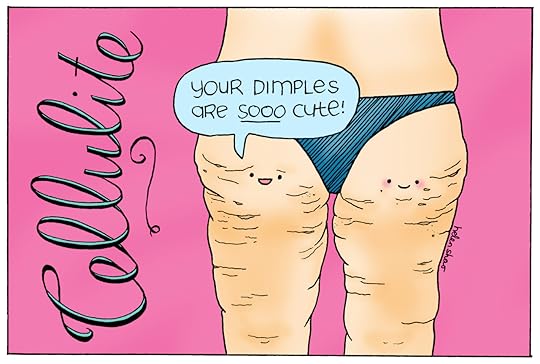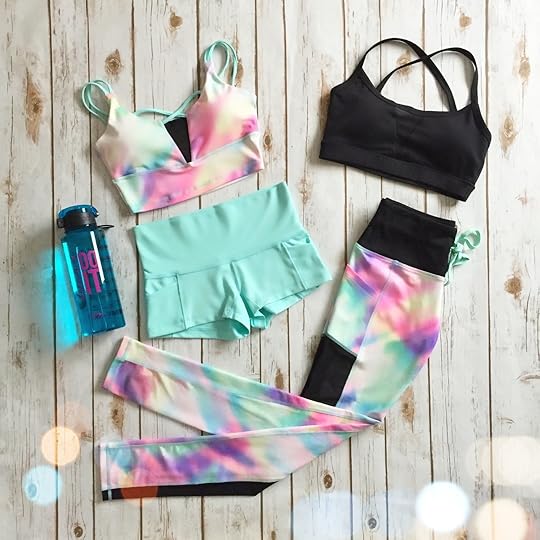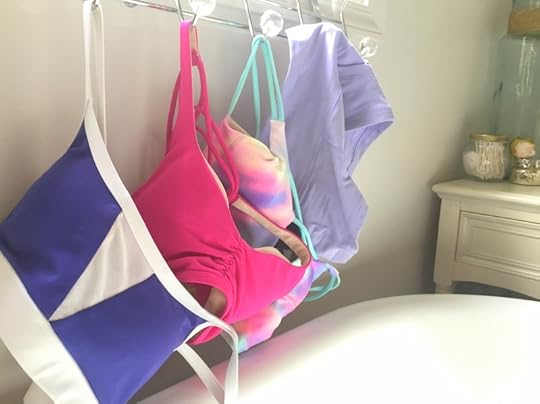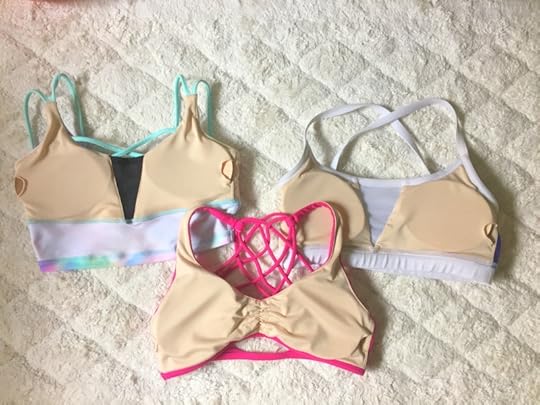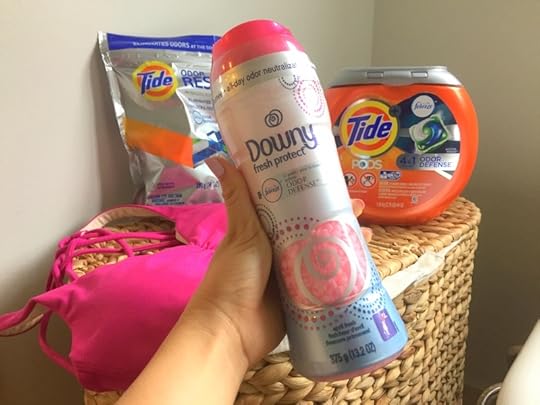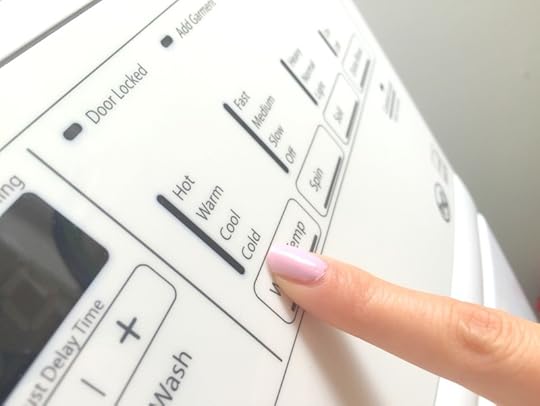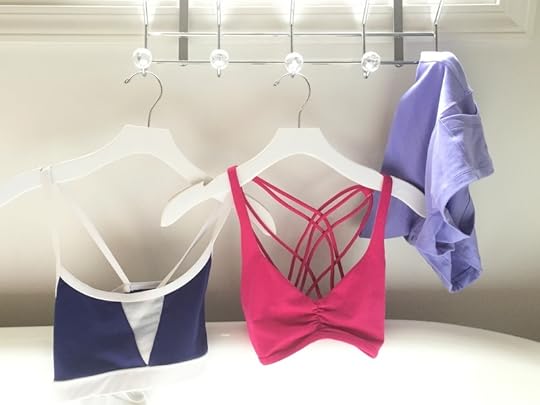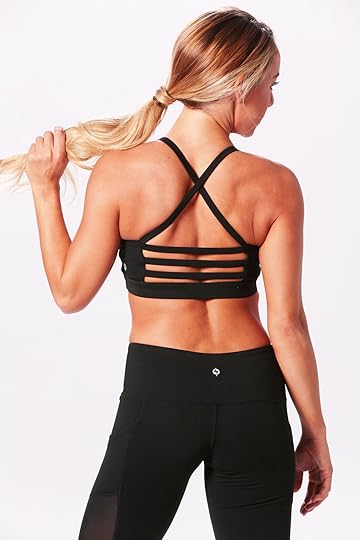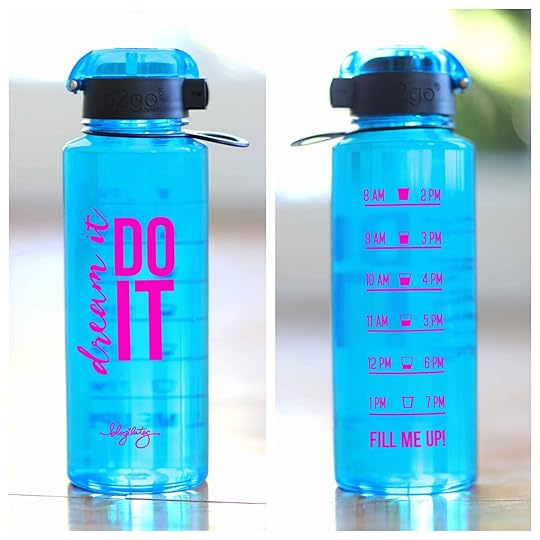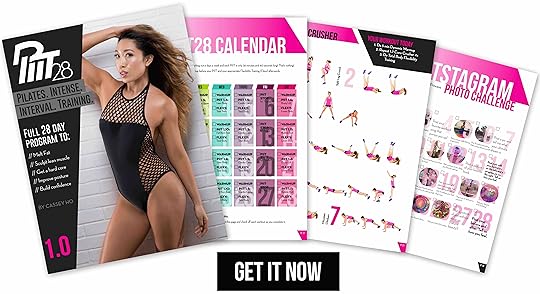Cassey Ho's Blog, page 116
June 1, 2016
Tie Dye Popsicles!
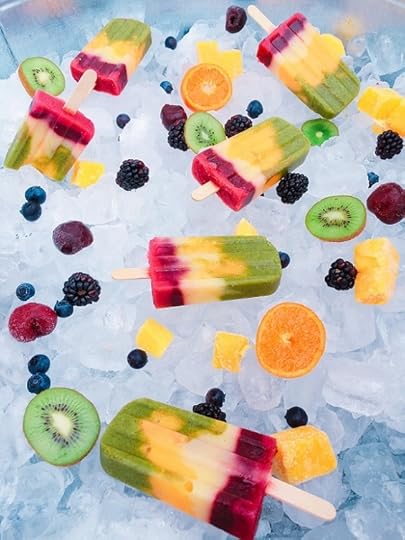
Hey guys!
To me, there’s nothing more satisfying than something really cold and refreshing as the weather begins to warm up. And if it’s totally cute and colorful, it tastes even better, right?! That’s certainly the case with these tie dye popsicles. Obviously they’re gorgeous and just scream, “I’m healthy and full of antioxidants,” but they also taste absolutely incredible!
Believe it or not, nailing health, beauty and taste in a recipe can be hard. Sometimes we sacrifice taste because something is “good for us,” or it’s gorgeous for a photo but might not be the healthiest choice. I’m here to say, these get an A+ on ERRTHANG!!!!
Oh! And did I mention they’re easy to make? I’ll teach you the trick to layering if you don’t have the patience to freeze every layer before adding the next one. (I mean, who has time for that?) We need to get to the sweet, sour, cold and perfectly drippy final product instead of laboring for hours. Imagine all the possibilities for colors too! Just select the colors of fruit you wish to highlight for your next soiree, and follow the method for these no-fail pops! Seriously guys, you must make these with your favorite fruits! They taste way better than anything you can get from a store, and there’s no added sugar, so you can feel good about eating them. They’re also less than 100 calories each!

TIE DYE POPSICLES
Yield: 1 serving
Serving Size: 1 popsicle
Prep Time: 15 min
Chill Time: 4-6 hrs
Ingredients:
Green Layer
1/2 cup packed spinach
4 kiwi, peeled
2 tablespoons lime juice
Pinch of stevia, or 6 drops liquid stevia
Orange Layer
4-5 frozen peach slices (about 1 peeled peach), slightly thawed
1/2 cup frozen mango chunks, slightly thawed
2 tablespoons orange juice
Yellow Layer
3/4 cup frozen pineapple tidbits
1/2 ripe (unfrozen) banana
2 tablespoons orange juice
Purple Layer
1/2 cup blackberries
1/4 cup frozen blueberries
1/4 banana
Pink Layer
1/2 cup pomegranate seeds
1/4 banana
2 tablespoons orange juice
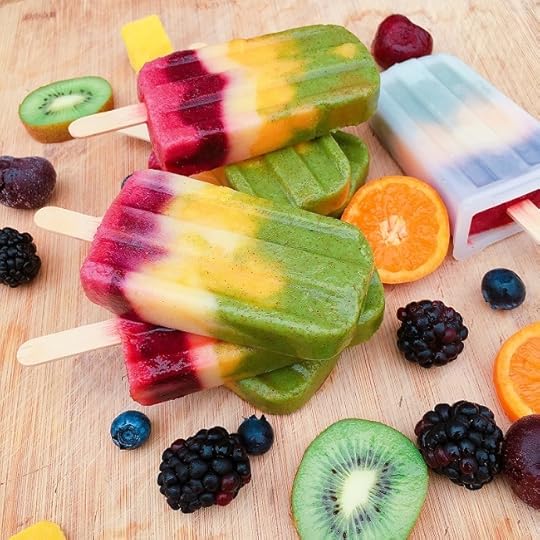
Method :
Prepare 8 popsicle molds like these into their holders.
Begin by blending the green layer ingredients until completely smooth. Spoon into the bottom of the molds. Place in freezer while you prepare the next layer.
Blend the orange layer ingredients together. This layer will be thick. If you want little pieces of real fruit, pulse blend instead. Spoon this layer on top of the green and push the stick into the center just a bit in order to begin your tie dye effect. Remove the stick and place molds in freezer.
Blend the yellow layer and repeat the above instructions.
Blend the purple layer and repeat the above instructions. Be careful here on how much you push your stick through the other colors, as the purple is quite dark and you don’t want to swirl too deeply.
Blend the pink layer, which will be thin. Strain out the seeds using a strainer and spoon to push the juice through. Pour on top of the purple layer. Insert the sticks and place in the freezer for 4-6 hours, or until completely frozen.

TIPS:
If you don’t want to freeze for several minutes between layers, just make sure that each layer (except the last) is very thick and “spoonable.” If early layers are thin and later layers are thick, they fall right through the early layers.
If you have all of your ingredients out and ready to go, it expedites the process, and the frozen berries have just enough time to thaw a little, but not too much.

Nutrition Info:
Calories: 88 | Protein: 1g | Fat: 0g | Net Carbs: 20g | Fiber: 3g
YUMMY!!!! Comment below what your fave fruit is!
May 31, 2016
June 2016 Blogilates Workout Calendar!
Click to download hi-res version
Hey guys!
HAPPY JUNE!!!
Check out your brand new June 2016 Blogilates Workout Calendar! WOOHOO!!!
I am totally digging the pool water background with the ombre pineapples. It’s perfection and makes me feel all sorts of summery good vibes! And get ready for the 1st day of summer which is coming on the 20th!
Your exclusive video this month, which can be found in the Blogilates App, is called “Slick Shoulders and Arms”. Be sure to check that one out as it is a killer!
Comment below and let me know if you’re in it to win it this month!
GOOD LUCK POPSTERS! Let’s look our strongest in our swimmers this summer!
Protected: June 2016 Blogilates Workout Calendar!
This content is password protected. To view it please enter your password below:
Password:
May 30, 2016
How To Get Rid Of Cellulite
Hey guys!
It’s time to tackle cellulite.
It’s something that 80-90% of women all have. Yes 80 to 90 PERCENT!! Why does this cottage cheesy looking skin have to show up on our thighs and stomachs and make us feel super self-conscious when we wear booty shorts or a bikini!?
There’s actually a lot of misinformation about what cellulite is and what causes it. Most people assume it’s because they have too much fat on their body, or because they aren’t working out hard enough or eating healthy enough. But, many people who are extremely fit and healthy, STILL have cellulite!
As I mentioned, there has been a lot of debate and misinformation about what cellulite is, but through research, scientists have found that it’s not just about fat, it’s actually based around the structure of your skin.
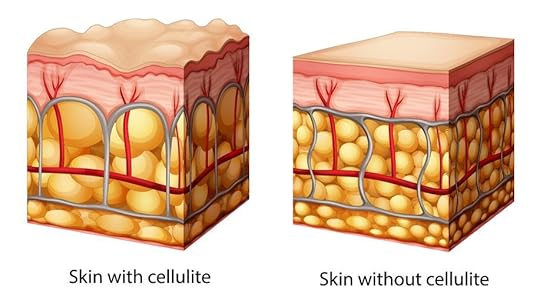 A study conducted by the International Dermal Institute, investigated the walls of women’s skin and they found that the outermost layer of tissues contains something called “fat cell chambers” that are separated by vertical connective tissues called “septa”. (Those are the gray lines in the figure above.) When stretched, the uppermost point of these chambers will billow up into a dome. Things that cause the arc-shape of the dome to form are: fluid retention, lack of strength due to little or no exercise, or excess fat. And when you have arcs, you have the appearance of small bumps on your skin, aka “cellulite”.
A study conducted by the International Dermal Institute, investigated the walls of women’s skin and they found that the outermost layer of tissues contains something called “fat cell chambers” that are separated by vertical connective tissues called “septa”. (Those are the gray lines in the figure above.) When stretched, the uppermost point of these chambers will billow up into a dome. Things that cause the arc-shape of the dome to form are: fluid retention, lack of strength due to little or no exercise, or excess fat. And when you have arcs, you have the appearance of small bumps on your skin, aka “cellulite”.
Now that you understand how cellulite forms, have you ever wondered why most women have it but men don’t?
In the 1970s. Dr. Nurnberger and Dr. Muller examined the structure of the skin and found that in female bodies, the hypodermis was made up of larger freestanding fat cell chambers separated by VERTICAL walls of septa, whereas in male bodies, the fat cell chambers are smaller and have DIAMOND shaped septa.
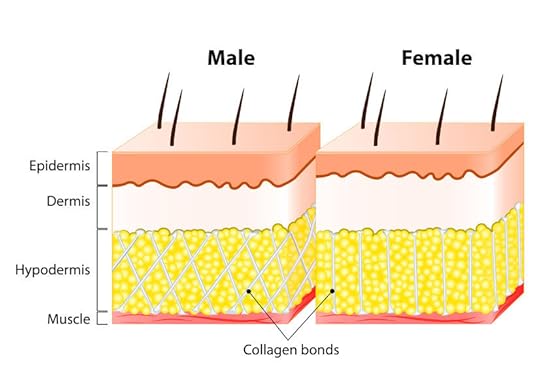
Having diamond shaped septa is the reason why you can’t see cellulite on guys! The structure of this type of septa gives the chamber more strength, so that even when fat cells swell up, they don’t push through and bulge at the skin.
GREAT.
Oh, and INTERESTING fact: men with more feminine characteristics tend to have fat cell chambers closer to those of women, which means that hormones are likely the reason for this structural difference.
These following things may be causing your cellulite:
Poor diet/nutrition
Lack of exercise
Dehydration
Smoking
High stress levels
Poor sleep habits
High % of total body fat
Family history of cellulite
So, what do you do to get rid of it?
There are many creams and products that SAY they will help remove cellulite, but there isn’t much evidence to prove that they actually work. Spa treatments and massages have been known to temporarily reduce the appearance of cellulite, but it doesn’t result in permanent removal. Laser treatment can shrink fat under the skin and reduce the look of cellulite, but again, there’s still mixed research about its effectiveness.
With all that being said, the 3 things that can actually help reduce the appearance of cellulite are:
1. Exercise
Regular physical activity will strengthen the connective fibers in your legs and stomach, which will reduce the appearance of cellulite. A combination of cardio and strength training has been known to help reduce the appearance of cellulite the most.
2. Nutrition
What you put into your body directly affects how it looks! Eating a diet high in leafy greens, will reduce inflammation in the body. Also, making sure to add fatty fish and nuts to your diet will get those essential fatty acids in, which help strengthen your connective tissue. Limit foods with added sugar, and high sodium to reduce bloating and fluid retention.
3. Hydration
Staying hydrated is also one of the best remedies for healthy looking skin because it supports healthy connective tissue. 80-120 oz of water a day is essential, especially if you’re active. So drink up! Also, try and keep carbonated and caffeinated drinks to a minimum.
See how it always comes back to fueling your body from the inside out? If you workout regularly and feed your body with whole foods, then your body will respond back in a positive way. Even though there are still factors that can play a role in the development of cellulite, the best and most natural thing to do is focus on strengthening your body and fueling it with nutritious foods.
But EVEN IF you do all of the above and you still have cellulite…honestly, WHO CARES! If you’re healthy, you’re good! Our bodies are so much more than the way it looks. And like I said above, a MAJORITY of women have cellulite. It’s like having hair – it JUST IS. Don’t let your physical attributes control how happy and confident you can be. Just don’t pay any mind to it. Keep doing what you do, and LIVE ON!
Comment below and let me know what makes you feel super self-conscious about your body.
RESOURCES
http://www.webmd.com/beauty/cellulite/cellulite-causes-and-treatments
http://www.webmd.com/beauty/cellulite/can-you-beat-cellulite
http://hubpages.com/health/science_of_cellulite
http://www.health.com/health/gallery/0,,20735356,00.html
http://www.dermalinstitute.com/us/library/58_article_What_Is_Cellulite_.html
May 27, 2016
Healthy “Chipotle” Vegan Burrito Bowl!
Hey guys!
I just got off a 20 hour flight and am laying in my hotel bed blogging to you! Tomorrow (Sunday) I am teaching POP Pilates for the first time in Malaysia! I’ll be at the Zespri Sungold KiwiFest and looks like it’s gonna be a HUGEEEE class! I am SO PUMPED! I cannot wait to see you!
To fuel up for the event or any Blogilates workout, try making my new Cheap Clean Eats recipe for a healthy vegan taco bowl! Erin and I had so much fun putting this together because it’s super quick and SUPER DELICIOUS! Watch my new video!
VEGAN TACO BOWL
Yield: 1 serving
Serving Size: 1 bowl
Prep Time: 10 min
Cook Time: 20 min
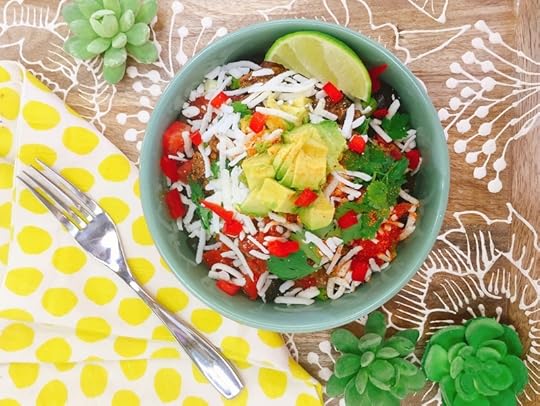
Ingredients:
1/2 medium head cauliflower (about 300 grams, riced)
Pinch of sea salt
Pinch of taco seasoning
1 black bean burger, heated and sliced
1/3 cup red bell peppers, sliced
1/4 cup yellow onion, sliced
1/3 cup salsa, divided
1/4 cup black beans
1/4 of one avocado
2 tablespoons sliced olives
1/4 cup vegan shredded cheese (optional)1 tomato, chopped
Cilantro for garnish
Method:
Preheat oven to 400°F. Remove stems from cauliflower and chop florets slightly. Place into a food processor and “rice” until it resembles short-grain rice. Lay cauliflower on a nonstick baking sheet and sprinkle with salt and taco seasoning. Bake for 20 minutes.
Coat a sauté pan with cooking spray and add the bell pepper and onion. Cook over medium heat until soft and caramelized (about 5 minutes).
Mix half of the salsa and beans together.
Assemble bowl by adding the cauli-rice, black bean burger, sautéed vegetables and bean mixture. Decorate with avocado, olives, cheese, tomato and cilantro. Top with remaining salsa, and serve.
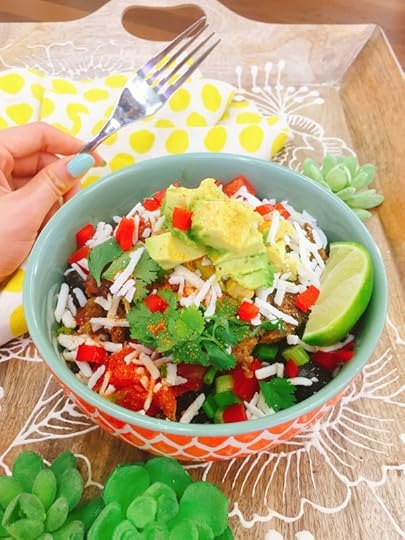
Nutritional Info:
Calories: 423 | Protein: 23g | Fat: 19g | Net Carbs: 40g | Fiber: 22g
YUM YUM IN MY TUM TUM.
It’s 5 am and I am really hungry, jet lagged, and confused.
Blogging about food at this hour is not a good idea.
Anyway!! Let me know what recipe you would like to see healthified next in the comments. GOOOOO!!!!
May 23, 2016
What being STRONG really means…
Hey guys!
Let’s talk about STRONG.
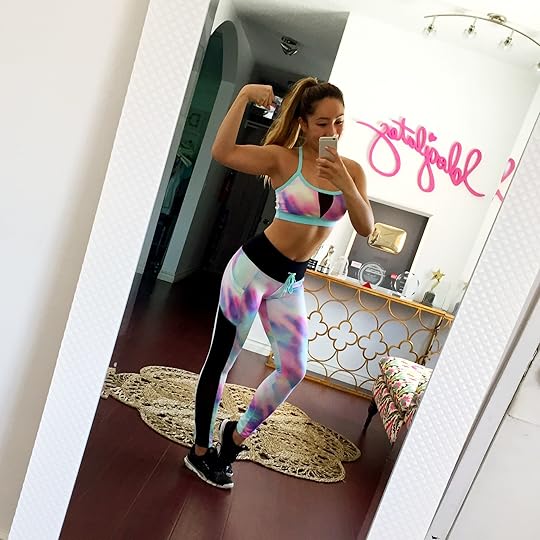
We are all so conditioned to “know” what strong is supposed to look like. Shredded abs, poppin’ biceps, and a huge, lifted booty. At least that is what Instagram tells us. And I don’t doubt that people with those physiques are lean and fit, but you shouldn’t feel weaker if you don’t look that way. Strength is something from inside, and no one can accurately judge you for that. We all have our own story.
I used to live a life where I strived for vanity in my physique. I mean, I competed in a bikini competition – how much more physically obsessed can you get!? I worked my head off 4 hours a day to lose weight and have slightly more visible abs than I do in the pic above, where I work out only 28 minutes a day with PIIT28.
But now, the difference is, I work out because it makes me a better person, not because it makes me a “hotter” person.
I challenge you to think about that for a second.
Working out makes me stronger, sharper, faster, smarter, less stressed, and happier. The reason why I don’t skip a workout now isn’t because I’m scared of getting fat (old thinking), it’s because I really like the person I am after I exercise. The positive vibes spread to the people I interact with at work and it feeds into my creativity for my business.
This is what I call a mind shift. And what happened after that mind shift is magical.
My body started changing.
It started sculpting itself towards it’s own best shape because I approached fitness with joy, not with angst. I work out for the RIGHT REASONS.
Now, when I exercise, I get EXCITED (like super excited) when I can go lower in my tricep pushups and when I can sprint faster on the treadmill. There’s this feeling of ultimate inner satisfaction that reminds me of pure childhood joy. I mean, whether or not the scale goes down, and whether or not the muscle striations on my legs become more visible, WHO CARES!!! I don’t need an IG pic and loads of comments saying “You look pretty” to validate my worth! I KNOW MY WORTH!! Look what I can do that I couldn’t do just a few weeks ago!! That is called real strength, and THAT is awesome!
And guess what? When you focus on what matters, like how much you honestly ENJOY sweating it out, everything just starts to fall in place. You find your balance.
Sometimes, people try to complicate fitness too much with exact calorie counts, exact calorie burn, and all sorts of crazy wild theories on what you should eat and how you should work out. Do not be overwhelmed with OVER-INFORMATION.
This is the key:
Find a workout that makes you smile and keeps you coming back. It should be something you look forward to, not dread! Then, do it as much as you can (try 5-6 times a week).
Feed your body for energy. Notice how your body reacts to certain foods. If you break out or feel lethargic after eating a certain thing, stop having it! Be your own nutritionist. You just have to be conscious.
That is how you will find your own strong. Strong looks different on EVERYONE. So stop comparing yourself to others. Start comparing yourself to who you were yesterday.
***
Ready to hear who the POPFLEX Mermaids Giveaway Winner is? With over 11,000 entries, I am stunned by your excitement!! I read some very good ideas for future collections! So, thank you for your lovely suggestions! The winner of the below assortment is…
Congrats Elise!
May 20, 2016
How to Properly Wash your Activewear
Hey Guys!
I’m obviously into clothes. Workout clothes especially. I design ’em, I wear ’em, I live ’em!
Since we’ve released the second POPFLEX Active Collection, many of you guys have been curious as to how to keep the colors vibrant bright and smelling great after every wash!
GREAT QUESTION.
So, when Tide and Downy reached out to see if I wanted to share their new laundry regimen with you guys, I was like YES! I was going to blog about this anyway and I had been using a Tide detergent. I’m very excited to show you EXACTLY how I keep my activewear beautiful in my partnership with Tide and Downy with the help of the Tide + Downy Odor Defense Collection!
It’s the most annoying thing when you think you’ve washed something well, and then you put it on, only to smell that nasty, dirty stench again. Why won’t that odor go away?
Basically, traditional detergents are made for removing stains from natural fabrics, like cotton, and don’t do a good job at cleaning out the odor trapped in the technical performance fabrics. Since fitness fabrics are woven with a “hollow weave” that traps sweat molecules, it becomes a whole different ball game that now involves specific odor removal.
Oh and before I get into my exact steps of activewear care, I want to let you know that we made sure to use ONLY quality fabrics and dying techniques that would keep your POPFLEX from going dull after just a few washes. I personally tested our fabrics and am 100% confident that they not only look good, but they live up to their technical standards of being moisture wicking, shrink resistant, fade resistant, with ultimate stretch and recovery (aka no saggy butt)!
So here’s what I do to keep my activewear looking and smelling like brand new:
Don’t throw your sweaty clothes in the hamper right away.
This is a big one. I actually air dry them over the side of my bathtub overnight before I put them in the hamper. I don’t want my sweat to stay in my clothes for a week or however long until I have time to do laundry. That’s nasty! The odor may set in. Plus it’ll make all my other clothes smell!
Turn your clothes inside out before you wash them.
I do this for safety. Just in case anything rubs up against my precious POPFLEX, at least it’s getting the inside where no one can see if a mark is left. Also, it’s the dirtiest part of the clothing where all my skin cells and sweat has rubbed into. So let’s get it clean!
3. Use a laundry regimen MADE for fitness clothes.
Try using Tide + Downy Odor Defense Collection! It removes odors to really make your activewear smell good, and not just during the initial wear, but after you work out too. So, smells don’t come back! Here are the 3 items I use together:
The Tide Pods plus Febreze Odor Defense TM cleans fabrics and removes dirt at the surface.
The Tide Odor Rescue with Febreze Odor Defense TM goes deep into the fibers and removes greasy body soils and odors.
The Downy Fresh Protect with Febreze Odor Defense TM adds in up to 24 hrs of freshness.
Because my life is my activewear, I make sure to take good care of it. I’ve tried other detergents and honestly, this one keeps my stuff looking and smelling the best.
Use cold water.
This prevents the color of your fabric from fading! Just like how I grew up not using hot water for my black or dark colored clothing, it’s the same idea.
Ditch the dryer!
If you want to be extra cautious, hang dry your clothes NOT in direct sunlight. The extreme heat from the dryer can change the fit, reduce elasticity over time, and possibly alter the performance of your clothes. Also, if you hang dry in direct sunlight, there is a chance that the color will fade faster over time.
I say this, however, I have probably washed my POPFLEX pieces a dozen of times and I must admit, I have passed them through the dryer too. But they are totally fine! Good quality activewear should not be affected extremely by the drying process.
I hope that helps guys! Do you have other tips for taking care of your activewear? Let me know in the comments!
May 18, 2016
POPFLEX Mermaids Giveaway!
Hey you beautiful mermaids!
Since you’ve been BUSTING your butts, I thought it’d be appropriate to reward you with a GIVEAWAY!!! I am so excited to send one lucky POPster this entire POPFLEX Mermaid Pack!
See everything in that pic above? Eh, probably not – let’s get a closer look…because you gotta see everything that could be yours!
This is the Mermaid Draw the Line legging. It has pockets, mesh, and the most beautiful print ever. How can you not love this. These pants are everything. You can wear them over the heel or slightly scrunched at the bottom. Up to you. It’s just…perfection.
Talk about a back exit to be remembered by! This is the Set the Bar Bra in Nightfall! It’s definitely sturdy enough to hold everything in as your running, jumping, or doing any type of high intensity activity, like PIIT28!
When I designed the Criss Cross Top, I was imagining how graceful and majestic each one of you would look with those seafoam colored straps accenting your chest. I am really so happy with how it turned out.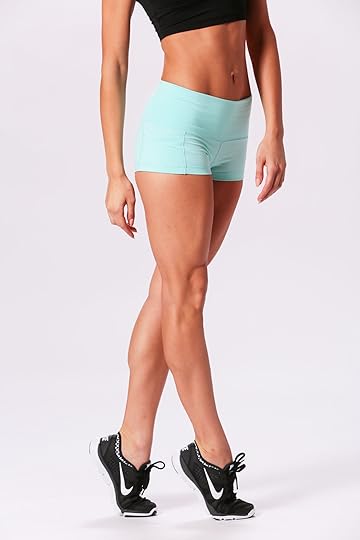
It’s the Pop Short! I remember working for my first employer straight out of college. I was in the activewear department. I was telling the buyers that booty shorts were all the rage and that we should sell more of them in our stores. They looked at me like I was crazy and laughed. I quit shortly after because I never want to be in an environment where my genuine opinion is not valued. And now…POPFLEX has booty shorts and you guys have proven that booty shorts ARE all the rage! Thank you :)
This Slim Jewel Timer bottle is life. It’s how I stay hydrated. It sits on my desk, it goes with me in my car, and stays with me throughout all my gym workouts as I fill it up over and over again. The timer function is really fun to play along with all day. It’s helped so many POPsters stay hydrated which is amazing for energy, clear skin, and gut health!
Ok, are you ready to hear how to win all of this?
All you have to do is comment below and tell me…
You can be from any country and of any age!
Contest will end on Sunday May 22nd, 2016. We will personally contact the winner and announce right here shortly after.
Good luck guys! Go for it!
May 17, 2016
PIIT28 1.0 Round 2 Transformations
Hey guys!
WOW!! I am seriously blown away by all of your PIIT28 progress. And I’m not just talking about the physical. Whether it’s from your first round doing PIIT28 1.0, or your second round, I can see that you are stronger, happier, and more confident! Your before and after pics are so motivational, so thank you for posting them and writing about how you truly feel about the program. Simply by doing that, you inspire people to change their lives. YOU are impacting the world through your own fitness journey. I couldn’t be more proud.
Ready for some serious inspiration!!??
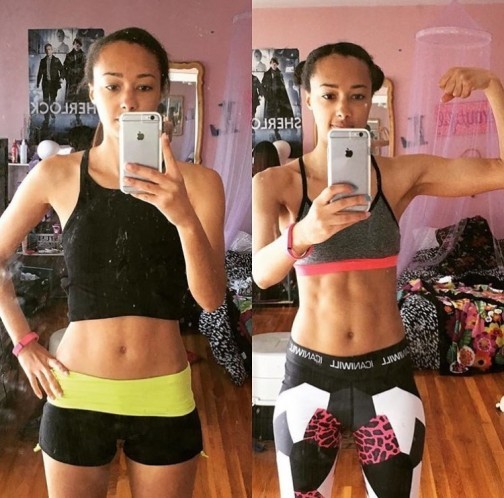 Meet Taryn, @syndrigast_popster
Meet Taryn, @syndrigast_popster
“Day 28: Before and after. The last 56 days have been insane. I completed PIIT28 round 2 yesterday and I feel great. There have been a few physical changes to my body, but the biggest change of all is how much stronger I have become. When I started PIIT28 back in March, I felt so weak. I had to take 3 minute breaks in between each round because I was so tired and sore. Now I can do it all with no problem. I pushed myself to my limits and made sure to work harder every time.”
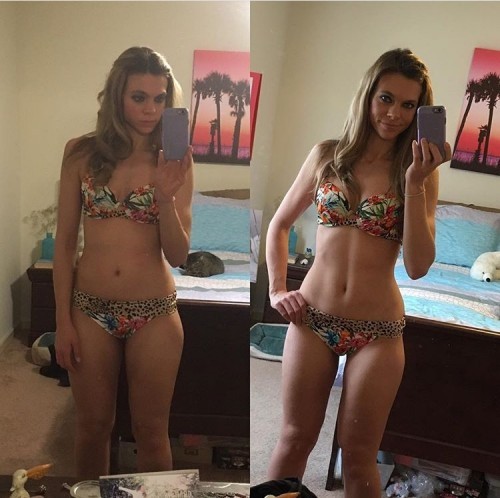 Meet Brooke, @brookegetsfi08
Meet Brooke, @brookegetsfi08
“Day 56: Before (March 1) and After (April 28). All I could do when I first took this after picture was pick out all my flaws. Someone said something really negative to me about my appearance this morning and it made me feel extremely discouraged. But then I thought why am I letting the words of someone else affect the way I feel about myself?! I’m proud of myself for sticking with #PIIT28 for two rounds! I’m feeling better than I have in a long time. I’m stronger. I have more energy. And I am happier. I’m really proud of everyone on the PIIT journey. It’s hard stuff, but we can do it!”
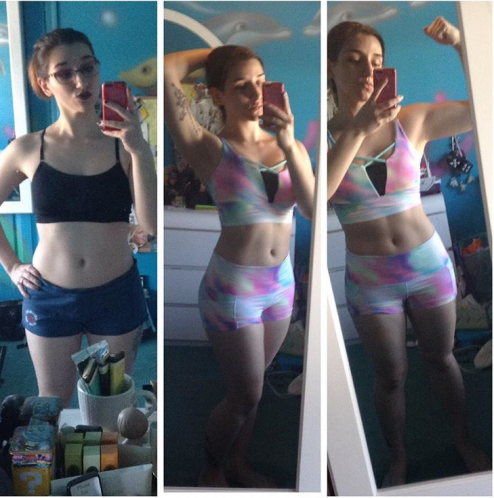 Meet Val, @sailor_mars93
Meet Val, @sailor_mars93
“My latest progress pic of #PIIT28 and it’s incredible what a change I see. I feel tighter and slimmer but more importantly I’m happier. I feel energized and healthy and really strong. PIIT28 has changed my life and I can’t wait for more!”
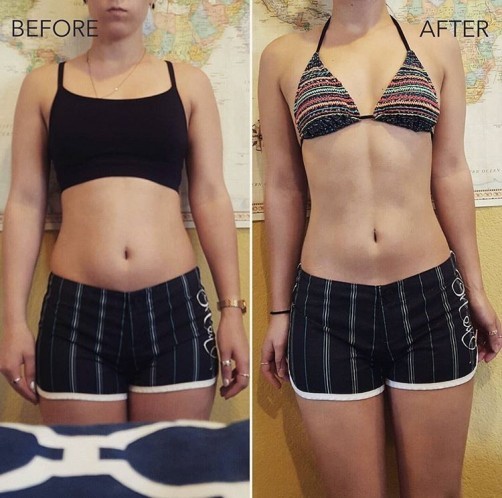 Meet Kendra, @kenny_sue
Meet Kendra, @kenny_sue
“PIIT28 journey: Flatter tummy, way more in shape, better booty, legs look amazing as always and I feel like a boss. So happy with the changes this has brought and for all the support.”
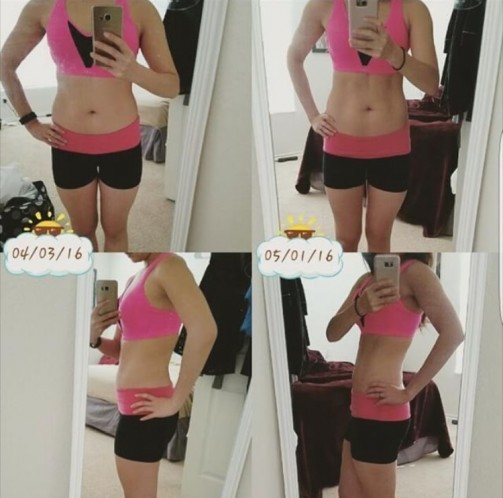 Meet, Kim @kimi_piit28
Meet, Kim @kimi_piit28
“Yes! Finally! PIIT28 1.o completed! I gotta say, this program is deceptively difficult! When I first looked at the workout, my thought was “oh…those moves look easy enough” … well this program was anything but easy.
I didn’t realize how stiff my body was until I tried to do low lizard lol. Heck, even front kick was painful, but eventually the moves got more and more fluid and I was doing more and getting better. Not gonna lie, there’s been days where I didn’t want to do anything, didn’t feel like working out, but somehow, I managed to get off my butt and get it done without missing a single day! Looking in the mirror every day, I didn’t feel like there’s any changes, but looking at the progress pictures side-by-side, I’m quite proud! I can see subtle changes and I feel stronger.
I’m so glad I got on this program (on a whim) 28 days ago!”
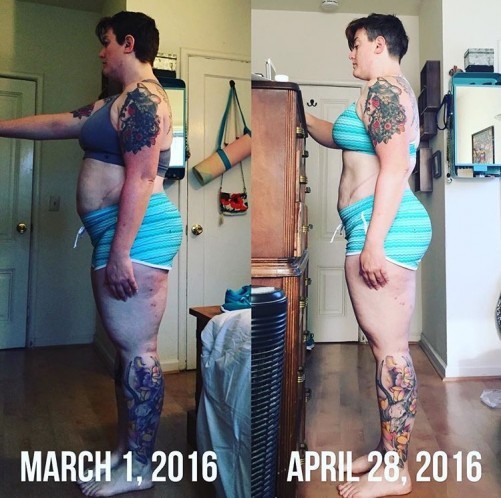 Meet Aly, @calypop78
Meet Aly, @calypop78
“In 2 months I’ve dropped 8lbs and a total of 8 inches by eating more and exercising regularly. My strength and stamina have noticeably increased.”
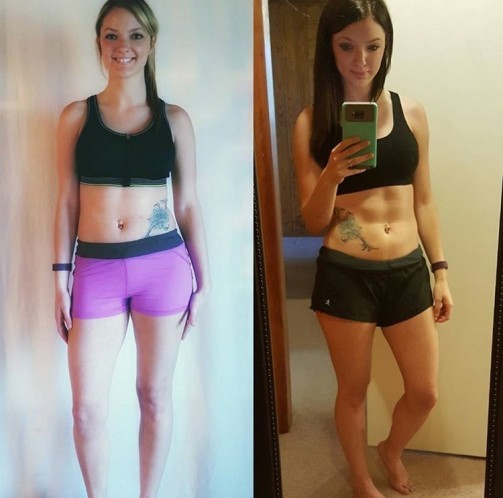 Meet Barbara, @blogilates_princess
Meet Barbara, @blogilates_princess
“This is my Day 1 and Day 56 before and after picture with the PIIT28 program and I feel incredible and so much stronger! LOVED the ab work and strength training that was added into the second round. I thought I was really “fit” in the first picture … This is the difference between just doing all cardio vs doing PIIT and strength training. It’s one thing to just burn off calories and another to build your body.”
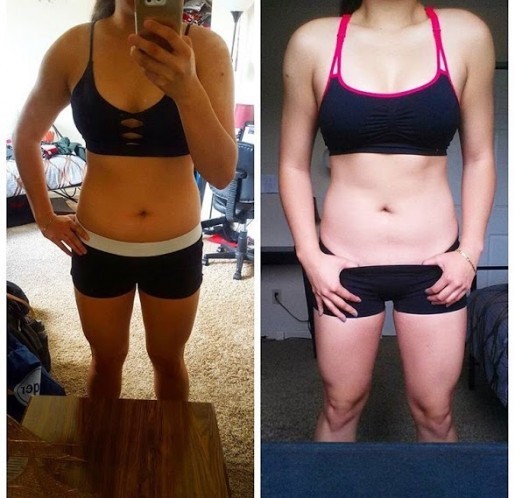 Meet Chantel, @chantelluu13
Meet Chantel, @chantelluu13
“I’ve finally completed the PIIT28 1.0 challenge by @blogilates for the month of April :) Left picture was taken on April 1st & the right picture was taken on April 28th! I feel so much stronger (mentally & physically) and I feel great. I’m more confident with my body. There’s still work that needs to be done but I’m proud of myself for doing this and now it’s time for the PIIT28 Bonus Round for days 29-56 or PIIT28 2.0!”
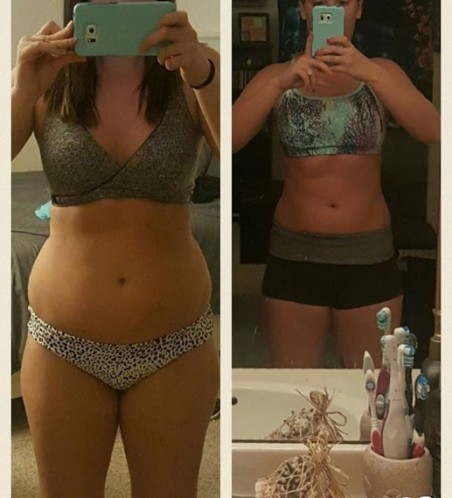 Meet Meghan, @meglan33
Meet Meghan, @meglan33
“Day 28 is FINALLY complete!!! I haven’t seen weight loss, but I’ve seen inches lost and muscle tone built. I’m in the process of cutting and getting more lean now. I’m not going to stop here. PIIT28 is now going to have a 2.0 version so I’m sooo excited about that. The other day I got called “acceptable” and those words really hurt, who wants acceptable? And more importantly why the crap did I care what this person thought? It’s MY body and I’m not done working on it yet, I still eat unhealthy at times, and take too many rest days in a row. But it’s a start and I’m getting there, it’s better than not doing anything at all. I’m learning to love myself and I need to learn to not care what others think. And so do you … whoever takes the time to read this! Love yourself and take care of yourself and forget the haters. Don’t ever listen to anyone who calls you “acceptable” you are so much more than that.”
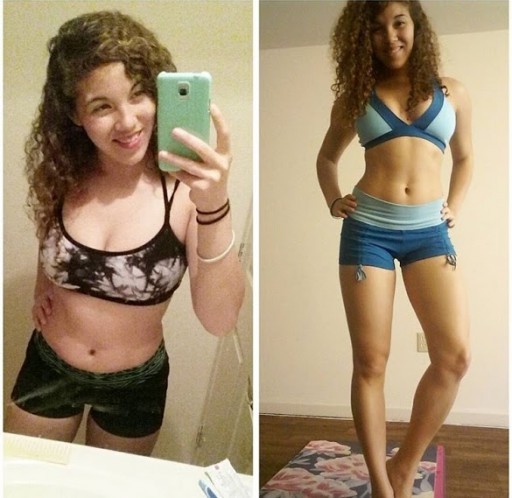 Meet Sharon, @doctorpokey
Meet Sharon, @doctorpokey
“Alright, Day 56 of the #PIITstagram photo challenge is the after picture (on the right) for a full 56 day of #PIIT28! #NOfilter on either of these photos besides adding brightness to make the photos clearer.
These past 28 days, I’ve slowly but surely been re-incorporating foods such as grains and dairy back into my diet to see how they affect my body. I’ve had plenty of ups and downs as far as weight is concerned, but I also feel a lot more comfortable in my own skin. I feel like I CAN eat regularly and not be afraid of gaining weight, and I feel like working out is FUN. It’s not about meeting some weight/fat-loss goal anymore, it’s about doing awesome stuff, like YOGA inversions. I’ve never been able to press into headstands before in my life, and now I CAN. I’ve learned that the best way to overcome your fears in life is to just do it!
There’s no such thing as perfection. That’s something I learned on this journey, that I won’t soon forget. Never go for a certain “look” or “size”, just love what you’ve got and make that BETTER. It’s all about practicing a process”
WOW! All you of ladies seriously ROCK. You amaze me so much because you’re honest and real about the ups and downs of your journey. But each and everyone one of you succeeded because you didn’t quit. You got stronger, healthier and happier. I am so proud of you and I can’t wait to see everyone’s results from PIIT28 2.0.
*****
Yay! I am seriously so motivated to go work out and sweat happy now because these ladies are SHINING with energy. It’s so infectious! If you want to give PIIT28 1.0 a go, here it is!
It’s not just an e-book, you have follow along videos, a community, and if it’s your first round of PIIT28, you have the chance to earn the completion tank! So you really can’t lose here. Well, you’ll lose fat…and gain some nice, sexy muscle!
And once you finish PIIT28 1.0, you have some bonus videos in there to go for your 2nd round and beyond. I want you to get strong and build the foundation for 2.0…because that stuff is hard! Once you’ve graduated from 1.0, you’ll have the option to move on to the next level. You’ll learn more once you’re inside!
Congrats to everyone! I am so proud of you!
May 15, 2016
Blogilates in Australia, Malaysia, and Singapore!
Hey guys!
2 bits of exciting news!
This “Quick Burn Calves” video left me so sore for 4 days. It was unreal. You will love.
I will be traveling halfway around the WORLD to see you guys this summer!
I am super excited to announce that Zespri, the New Zealand Kiwi Fruit (watch the video to hear my horrendous New Zealand accent) has invited me to come teach FREE POP Pilates classes in 3 different countries this summer! They are holding huge outdoor festivals and I want you to come! Let’s hang! 2 countries I have never ever been to and then 1, I haven’t been to in YEARS! I AM SO EXCITED!!!
You need to sign up because space is limited. So RSVP below:
Malaysia, May 29: http://www.wakeupwithzespri.com/my/
Australia, June 4: http://www.zesprigoforgold.com
Singapore, June 5: http://www.wakeupwithzespri.com/sg/
Please don’t be scared to come. Whether you’re a beginner or you’ve been doing Blogilates for over 5 years…doesn’t matter. The energy and happiness you will feel at the event will be something that will invigorate you forever. Not only do I want to meet you, I want you to meet other fellow POPsters in your hometown. These are the friendships and relationships that will bring so much laughter and joy into your life. I promise.
If you’re from any of the countries above, can you please comment and tell me what I should check out while I am there? I don’t have too much time in each place, so I would really appreciate any tips from the locals!
Thank you and I cannot wait to see you!
Cassey Ho's Blog
- Cassey Ho's profile
- 49 followers




